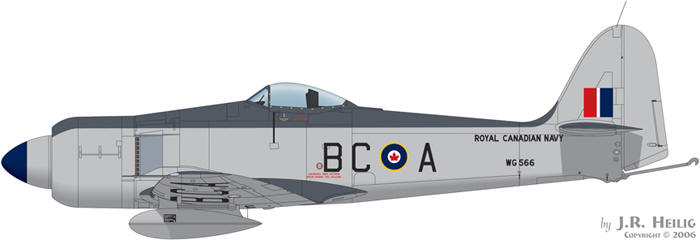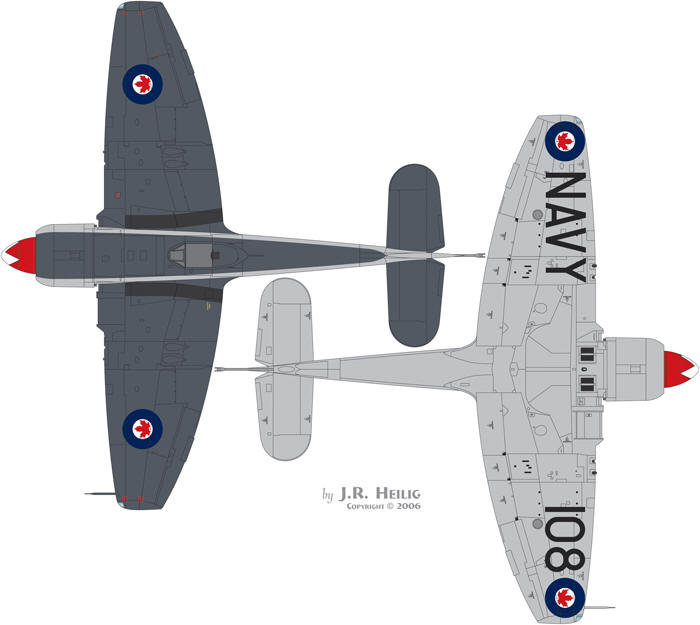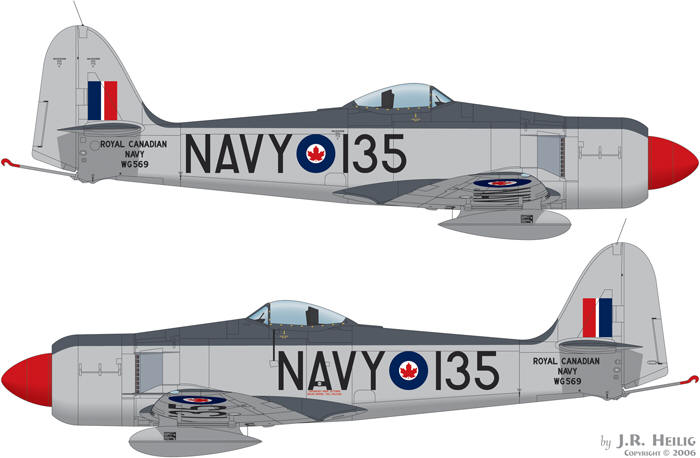Sea Fury FB.11 TG129 of 871 Squadron,
photographed in May of 1952. This is the Pattern 3 scheme as
applied by Fairey Aviation of Canada. Fuselage codes are 24" high
on this aircraft. Spinner appears very dark (darker than the upper
surface camouflage color), and is likely blue.

Sea Fury FB.11 WG566 illustrates the
factory-applied Pattern 2b scheme. It was delivered in 1951 wearing
full RCN markings. Note the single-line service identifier and the
incorrectly proportioned fin flash applied by Hawker. It is shown
in service with 870 Squadron aboard the Maggie in 1952. Spinner tip
is reported to be blue.

Sea Fury FB.11 TG118/108 of 870
Squadron, illustrating the new marking scheme introduced in
mid-1952. The red spinner with a white star motif and the black
outlined red lightning bolt on the outboard side of each wing tank
identify this aircraft as part of 870 Squadron's ad hoc
demonstration team circa September 1952. Items to note are the
lower Pattern 4 demarcation line, the orientation of the spinner
star points to the prop blades, and the thin black outline on the
spinner star and drop tank flash. Also note the later stencil style
service identifier and serial number.


Sea Fury FB.11 WG569/135 illustrates
a second example of the new marking scheme. This aircraft was
delivered from Hawker in Pattern 2b, and has completely standard
markings, with the service designator and serial revised after
delivery using the orignal style of lettering. It is illustrated as
it appeared in November of 1952 when it was involved in a landing
mishap aboard the Maggie off Bermuda. Spinner color may have been
EDSG, although WG569 definitely had a red spinner at a later date.

Home |
What's New |
Features |
Gallery |
Reviews |
Reference |
Forum |
Search